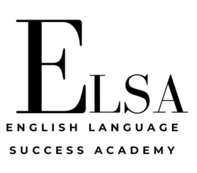The Test of English for International Communication (TOEIC) is a widely used English language exam that evaluates non-native speakers’ proficiency, particularly in a business context. For many, succeeding on the TOEIC is critical for advancing their careers, securing jobs in international companies, or achieving academic goals. Given the test’s comprehensive nature, effective time management and strategic test-taking skills are crucial for achieving a high score. This article will outline key strategies for pacing yourself during the exam, provide guidance on how to allocate time to each section, and offer tips on handling test day logistics.
The Importance of Pacing on the TOEIC
The TOEIC test consists of two main sections: Listening Comprehension and Reading Comprehension, each lasting approximately 45 minutes and 75 minutes, respectively. With a total of 200 questions and a strict time limit, pacing yourself is essential to ensure that you answer as many questions as possible without running out of time. Poor time management can lead to rushed responses, unanswered questions, and unnecessary stress, all of which can lower your score.
Suggested Time Allocation for Each Section
To maximize your performance, it’s helpful to have a clear time management plan for each section and subsection of the TOEIC. Below is a recommended time allocation for both the Listening and Reading Comprehension sections.
Listening Comprehension (45 minutes, 100 questions)
- Part 1: Photographs (6 questions)
Allocate about 1 minute to this section. Each question is straightforward, so you can answer quickly. - Part 2: Question-Response (25 questions)
Allocate about 9 minutes for this part. Listen carefully and respond as soon as you feel confident in your answer. - Part 3: Conversations (39 questions)
Allocate about 15 minutes to this section. You’ll listen to short conversations followed by questions. Be sure to listen for keywords and main ideas. - Part 4: Talks (30 questions)
Allocate about 15 minutes for this section. These questions are based on monologues or short talks, so focus on the overall message and key details.
Reading Comprehension (75 minutes, 100 questions)
- Part 5: Incomplete Sentences (30 questions)
Allocate about 15 minutes to this section. These questions are relatively quick to answer, especially if you’re familiar with grammar and vocabulary rules. - Part 6: Text Completion (16 questions)
Allocate about 10 minutes to this part. You’ll need to focus on the context of the sentences to complete the passages correctly. - Part 7: Reading Comprehension (54 questions)
Allocate 50 minutes for this section, as it contains both single and multiple passages. Try to spend no more than 1 minute per question. Be prepared to skim passages for key details and use scanning techniques to find answers quickly.
Test-Taking Strategies for the TOEIC
1. Answer Easier Questions First
One of the most effective strategies for time management is to answer the easiest questions first. This ensures that you secure points on questions you know well before tackling more difficult ones. For example, in the Reading Comprehension section, you can quickly move through Part 5 (Incomplete Sentences) and Part 6 (Text Completion), leaving you more time for the longer reading passages in Part 7.
- Tip: If you encounter a question that you find particularly difficult, skip it and return to it later. This prevents you from wasting valuable time on one question while ensuring you answer others that may be easier for you.
2. Use the Process of Elimination
When you’re unsure of an answer, use the process of elimination to narrow down your choices. Eliminate any obviously incorrect answers first, then make an educated guess from the remaining options.
- Tip: If you can reduce your choices to two, your odds of guessing correctly are much higher. Don’t leave any questions unanswered, as there is no penalty for guessing on the TOEIC.
3. Practice Educated Guessing
There will likely be questions where you’re unsure of the correct answer. In these cases, use clues from the context, sentence structure, or general knowledge of the topic to make an educated guess. For example, in the Reading section, if the passage is about business practices, business-related vocabulary or formal language is likely to be the correct answer.
- Tip: Avoid spending too much time on a single question. If you’re unsure, make a quick guess and move on.
Managing Stress and Maintaining Focus
The TOEIC is a long exam, and staying focused for the entire duration can be challenging. Here are some tips to manage stress and maintain concentration throughout the test:
1. Take Deep Breaths
When you feel anxious or overwhelmed during the test, take a few deep breaths to calm yourself. This can help you regain focus and avoid making careless mistakes.
2. Stay Positive and Focused
Maintain a positive attitude and remind yourself that it’s normal not to know every answer. Stay focused on doing your best on each question rather than worrying about how many you might get wrong.
3. Avoid Distractions
During the test, it’s crucial to block out any distractions and focus solely on the questions in front of you. If your mind starts to wander, gently refocus on the task at hand. Practice mindfulness techniques if you find it difficult to stay in the moment.
Test Day Logistics: What to Bring and How to Prepare Mentally
Proper preparation for test day can help reduce stress and improve your performance. Here’s a checklist of what to bring and how to prepare mentally for the TOEIC:
1. What to Bring on Test Day
- Valid Identification: Bring the required ID as specified by your test center (typically a passport or national ID).
- Admission Ticket: If your test center requires it, bring your printed admission ticket.
- Pencils and Eraser: TOEIC is a paper-based test, so bring several sharpened pencils and a good eraser. Mechanical pencils are usually not allowed.
- Watch: While some test centers have clocks, it’s a good idea to bring a non-digital watch to keep track of your time. Ensure it doesn’t have any additional functions, such as a calculator.
- Water and Snacks: While you won’t be allowed to eat or drink during the test, it’s helpful to have water and a snack for breaks to stay energized.
2. How to Prepare Mentally
- Get a Good Night’s Sleep: Make sure to rest well the night before the test. Fatigue can impair your focus and slow down your thinking.
- Eat a Healthy Breakfast: On the morning of the test, eat a balanced breakfast that includes protein and complex carbohydrates to keep your energy levels stable throughout the exam.
- Arrive Early: Give yourself plenty of time to arrive at the test center. Rushing at the last minute can elevate stress levels.
Elsa Says:
Pacing yourself on the TOEIC is key to maximizing your score. By allocating your time wisely for each section, answering easier questions first, and using strategies like educated guessing, you can improve your chances of success. Remember to stay calm, manage stress, and focus on each question as it comes. With careful preparation and the right mindset, you’ll be ready to tackle the TOEIC and achieve your target score.



